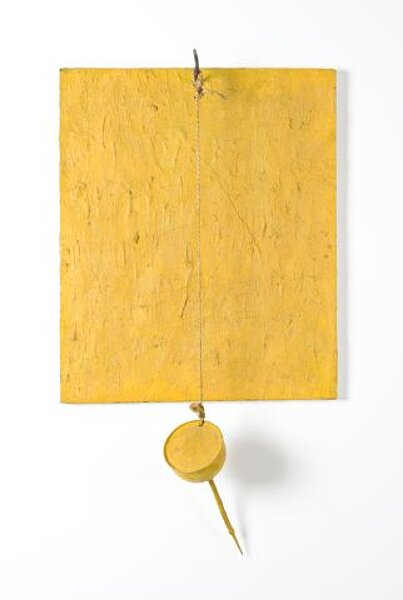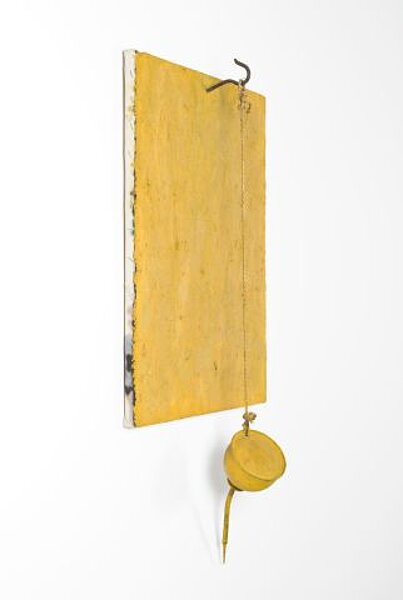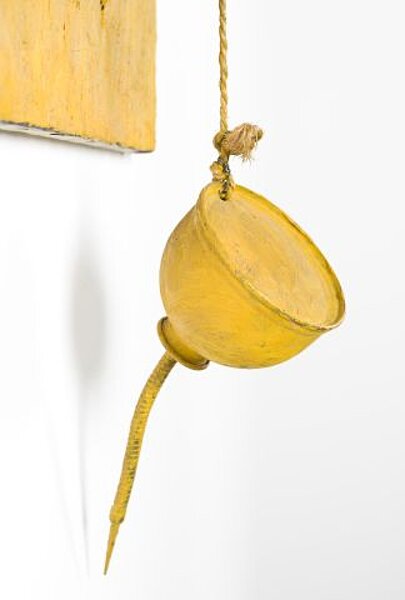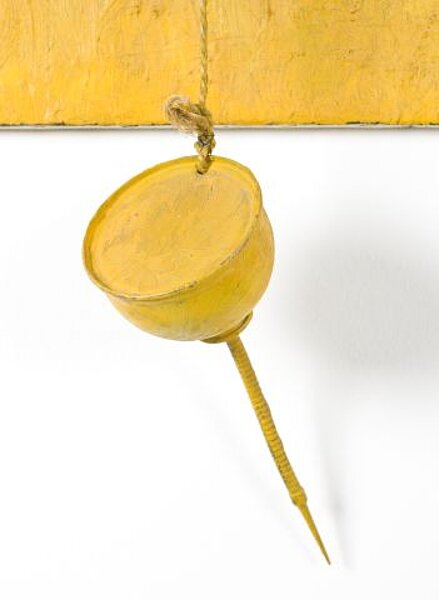
Dine, Jim
Yellow Oil Can
1962
| Object description | Oil on canvas, oil can, hook, cord |
|---|---|
| Object category | sculpture |
| Dimensions |
Objektmaß:
height: 90 cm,
width: 51 cm,
depth: 17 cm,
height: 64 cm,
width: 51 cm,
depth: 12 cm,
height: 26 cm,
width: 11 cm,
height: 63 cm,
width: 0,5 cm
|
| Year of acquisition | 1978 |
| Inventory number | B 408/0 |
| Creditline | mumok - Museum moderner Kunst Stiftung Ludwig Wien, ehemals Sammlung Hahn, Köln |
| Rights reference | Bildrecht, Wien |
| Further information about the person | Dine, Jim [GND] |
In 1958, Jim Dine came to New York where he went on to live for the next 10 years. In the same year he visited the first spectacular one man show by Jasper Johns which was of great influence to his further artistic career. Within a short period of time he made a name for himself with happenings and performances in the circle of Allan Kaprow and Claes Oldenburg. From 1961 Dine refocused more on painting and took up central motifs of Johns and Rauschenberg’s aesthetic. These two artists are considered the decisive link between abstract expressionism which dominated the American art scene into the mid-fifties and the new reforming Pop Art movement. <k>Yellow Oil Can<k> of 1962 shows an oil can fixed with hooks and a string in front of a monochrome yellow painting. The pasty application of paint lends the canvas a tactile object-like appearance strongly reminiscent of the surfaces of John’s paintings. The profane oil can in turn which is incorporated in the overall composition by the yellow overpainting adds a mobile element to the static surface, and could just as well have come from a combine painting by Robert Rauschenberg. While giving the color an object-like character, and refunctioning a concrete object as a three dimensional painting’s surface, Dine entangles the level of art with the reality of everyday objects.
© mumok – museum moderner kunst stiftung ludwig wien



